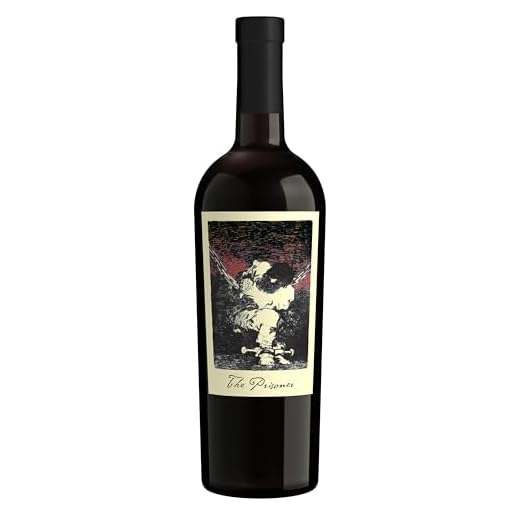



Choosing to indulge in this specific beverage does not automatically result in increased body weight. A standard serving contains approximately 125 calories, which is a moderate amount compared to other alcoholic options. However, the impact on your waistline largely depends on overall consumption patterns and lifestyle factors.
Moderation is key. Enjoying a glass occasionally alongside meals can complement your dining experience without significantly contributing to excess caloric intake. Pairing it with nutritious foods can enhance both flavors and health benefits, allowing for a balanced approach to your diet.
It’s essential to monitor total daily caloric consumption. If the addition of this drink leads to surpassing your daily energy needs, it may contribute to weight gain over time. Being mindful of portion sizes and frequency is crucial in maintaining a healthy balance.
Furthermore, consider the context of your lifestyle. Regular physical activity and a nutritious diet play vital roles in managing weight. Incorporating this beverage into an active lifestyle can be enjoyable without derailing your health goals.
Impact of Consuming Red Beverage on Weight
Moderation is key. Enjoying a glass of this fermented grape drink occasionally can fit seamlessly into a balanced diet without leading to unwanted weight gain. A standard serving contains approximately 125 calories, which can be easily accounted for when planning meals.
Choosing to pair this beverage with nutrient-dense foods can enhance the overall dining experience while minimizing caloric surplus. Opt for lighter fare such as grilled vegetables or lean proteins that complement the drink’s flavors.
Be cautious of portion sizes and frequency. Regular consumption of multiple servings can contribute to excessive caloric intake over time. Tracking daily caloric consumption can provide clarity on how this beverage fits into your dietary goals.
Additionally, consider the context of your overall lifestyle. Physical activity levels and metabolic rate play significant roles in weight management. Incorporating regular exercise can offset the caloric impact of enjoying a glass of this drink.
Lastly, be mindful of mixers and added sugars often found in cocktails that include this beverage. Opting for pure forms will ensure you enjoy the authentic taste without unnecessary calories.
Caloric Content of Red Wine Compared to Other Beverages
In a standard serving, which is typically 5 ounces, this variety contains approximately 125 calories. This number can vary based on the specific type and sweetness level, ranging from 120 to 130 calories. When compared to beer, a similar serving of regular lager can have around 150 calories, while light beer often has about 100 calories. For spirits, a shot of distilled liquor like vodka or whiskey averages around 97 calories, but mixers can quickly add calories.
Soft drinks, on the other hand, are considerably higher in sugar and can contain upwards of 150 calories per 12-ounce serving. Juices, although perceived as healthier, can also be calorie-dense, with orange juice clocking in at around 112 calories for the same serving size. This comparison shows that while alcoholic beverages do contain calories, they often align closely with sugary drinks rather than being excessively more caloric.
For those monitoring caloric intake, it’s essential to consider the overall consumption context. Pairing with food, frequency of consumption, and personal dietary goals play significant roles in whether these calories lead to weight gain. Balancing indulgences with lighter options and being mindful of serving sizes can make a substantial difference.
Ultimately, understanding the caloric content of the beverages consumed can help guide choices without completely eliminating enjoyment. Moderation is key to maintaining a balanced lifestyle while still enjoying a glass of this fine drink.
How This Beverage Affects Metabolism and Weight Gain
This drink contains compounds that may influence metabolic processes. Resveratrol, a polyphenol found in grapes, has been linked to improved insulin sensitivity, which helps regulate blood sugar levels. Enhanced insulin sensitivity can aid in maintaining a healthy weight.
Moderate consumption is key. Studies suggest that one glass per day can promote fat oxidation, helping the body utilize fat for energy rather than storing it. However, exceeding this amount can lead to a caloric surplus, counteracting any potential benefits.
Impact on Appetite
Interestingly, this beverage may also affect appetite. Some research indicates that moderate intake can lead to a decrease in overall caloric consumption during meals, possibly due to its relaxing effects. However, excessive amounts can lead to increased cravings and poor dietary choices, which can contribute to weight gain.
Alcohol Metabolism
The body prioritizes the metabolism of alcohol over other nutrients, which can temporarily halt the fat-burning process. This means that regular indulgence could disrupt metabolic efficiency, especially when combined with high-calorie foods.
In summary, mindful consumption, combined with a balanced diet and active lifestyle, is essential. Enjoying this drink in moderation can be a part of a healthy lifestyle without leading to unwanted weight gain.
The Role of Resveratrol in Fat Storage
Resveratrol, a polyphenolic compound found primarily in grape skins, plays a significant role in fat dynamics within the human body. This compound has garnered attention for its potential effects on weight management and metabolic health.
Research indicates that resveratrol may influence adipogenesis, the process of fat cell formation. Studies suggest that this compound can inhibit the differentiation of pre-adipocytes into mature fat cells, thereby potentially reducing fat accumulation.
Additionally, resveratrol has been shown to enhance the activity of enzymes involved in lipid metabolism. This enhancement may facilitate the breakdown of fatty acids, assisting in the reduction of overall body fat. Here are several key points regarding the influence of resveratrol:
- May inhibit fat cell formation by affecting gene expression related to adipogenesis.
- Supports the activation of AMPK (AMP-activated protein kinase), which is pivotal in regulating energy balance and promoting fat oxidation.
- Exhibits anti-inflammatory properties, potentially mitigating obesity-related inflammation that can hinder metabolic processes.
- Can improve insulin sensitivity, a critical factor in maintaining a healthy weight and metabolic function.
Incorporating sources of resveratrol, such as certain grape varieties or supplements, may provide additional benefits. However, moderation is key, as excessive consumption of alcohol can counteract these positive effects due to its high caloric content and potential to disrupt metabolic processes.
In summary, while resveratrol shows promise in influencing fat storage and metabolism, it should be considered as part of a broader approach that includes balanced nutrition and regular physical activity.
Portion Sizes: How Much of This Beverage is Too Much?
For optimal health, limit servings to no more than 5 ounces per occasion. This quantity typically contains around 125 calories, making it a manageable choice for those mindful of caloric intake. Consuming beyond this amount can significantly increase daily caloric consumption, leading to potential weight gain over time.
Understanding the impact of serving sizes is essential. When enjoying a glass, consider the frequency and context. Regular indulgence in larger portions can quickly accumulate calories, overshadowing the benefits often associated with moderate consumption. Aim for social occasions or meals to savor this drink, rather than as a daily habit.
Be aware of the common practice of pouring larger servings, especially in restaurants or social gatherings. A 10-ounce pour can double the caloric intake to approximately 250 calories, which may seem insignificant at first glance but adds up over time. Tracking consumption can provide insight into how portion sizes affect overall dietary habits.
Lastly, balance is key. If indulging in a larger serving, consider adjusting other meal components to accommodate the additional calories. Prioritize nutrient-dense foods in your diet to offset potential impacts from occasional larger servings of this beverage.
Pairing Red Beverage with Food: Impact on Caloric Intake
Opt for lighter dishes when enjoying a glass of full-bodied red. This approach helps mitigate total caloric consumption. Pairing with grilled vegetables or lean proteins like chicken or fish can enhance flavor without excessive calories.
Caloric Considerations
Understanding the caloric impact of food pairings is crucial. A standard serving of red beverage contains approximately 125 calories. When combined with high-calorie foods, such as creamy sauces or rich meats, the total caloric intake can skyrocket. Choose salads with vinaigrette or roasted lean meats for a balanced meal.
| Food Pairing | Estimated Calories |
|---|---|
| Grilled Chicken Salad | 350 |
| Spaghetti with Marinara | 450 |
| Beef Steak with Creamy Sauce | 700 |
| Vegetable Stir-Fry | 300 |
Mindful Pairing
Awareness of portion sizes is essential. A typical glass should not exceed 5 ounces. Keeping food choices light and fresh can significantly influence your overall caloric intake. Incorporate whole grains or legumes as sides to enhance nutritional value without excessive calories. For more on achieving a balanced approach to photography and food, check out the best aps c mirrorless camera dynamic range.
Long-term Effects of Regular Consumption of Red Fermented Grape Beverage on Weight
Moderation is key when enjoying this fermented drink. Regular consumption can have mixed effects on body composition, depending on various factors such as overall diet, lifestyle, and individual metabolism.
Impact on Body Composition
Research indicates that moderate intake may not significantly contribute to weight gain. In fact, some studies suggest a correlation between light to moderate consumption and lower body mass index (BMI) in certain populations. This could be attributed to the presence of antioxidants that might influence fat metabolism.
- Antioxidants found in this beverage may enhance metabolic rates.
- Polyphenols could potentially assist in regulating blood sugar levels.
- Moderate drinkers often engage in healthier eating habits.
Long-term Health Considerations
Chronic, excessive intake, however, can lead to adverse health outcomes. It’s essential to monitor consumption levels to avoid negative effects such as increased calorie intake leading to unwanted weight gain. The potential benefits diminish significantly when portions exceed recommended levels.
- Focus on serving sizes–standard servings are typically 5 ounces.
- Consider the overall dietary context; balance with nutritional foods.
- Stay active; regular exercise supports weight management.
In summary, enjoying this fermented beverage in moderation while maintaining a balanced diet and active lifestyle may provide benefits without adverse impacts on body weight.










